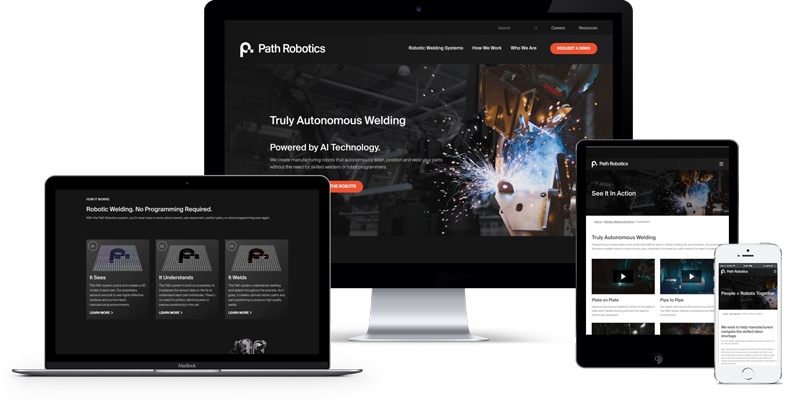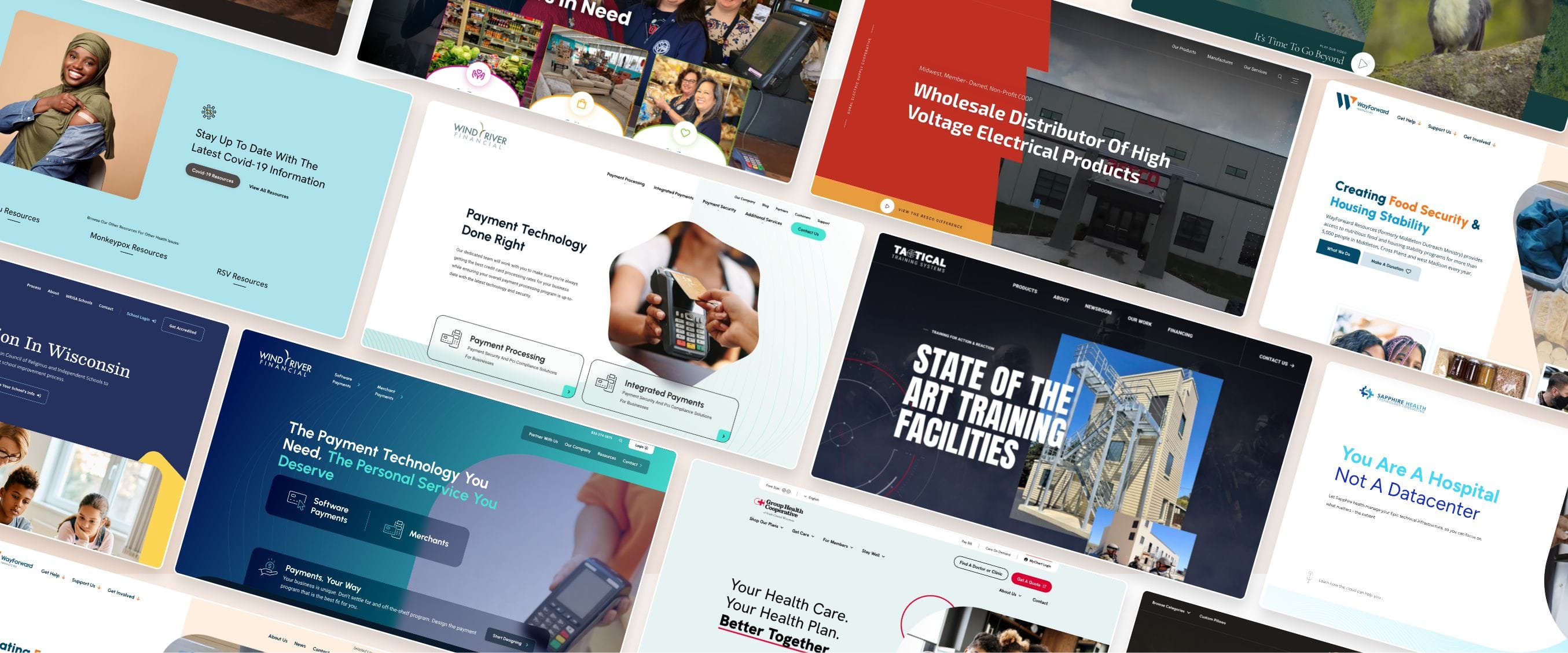Modern Website Layout That Catches Interest and Transforms
In a significantly electronic landscape, modern-day site design has actually emerged as a crucial variable in catching user focus and driving conversions. By strategically using aesthetic pecking order, responsive designs, and involving interactive elements, designers can create experiences that not only bring in visitors yet also help with purposeful interactions. In addition, efficient call-to-action methods play a critical role in leading users towards preferred outcomes. As we check out these important parts, it becomes clear that comprehending their interaction can substantially impact a web site's efficiency and user fulfillment. What are the crucial elements that truly make a difference?
Importance of Visual Hierarchy
Visual pecking order is a crucial aspect in internet site style, as it guides individuals' focus and improves their overall experience. By purposefully organizing web content, designers can direct customers to the most crucial info first, thus enhancing involvement and improving functionality.
Including a rational circulation in content plan is important; as an example, placing one of the most important info at the top of a page cultivates prompt recognition. Constant usage of typography, such as differing font dimensions and designs, helps establish a clear material structure. This company not just help in navigating yet also builds count on, as individuals really feel extra comfy when they can easily discover what they are seeking.
Ultimately, a well-executed visual hierarchy not only enhances aesthetic appeal but likewise substantially affects customer actions. By focusing on crucial components and ensuring a smooth experience, developers can properly transform site visitors into clients, strengthening the value of this foundational design concept in modern-day internet site growth.
Responsive Style for All Devices
Creating a seamless experience throughout different gadgets is vital in today's electronic landscape, where individuals gain access to sites from smartphones, tablet computers, and desktop computers alike. Responsive layout is an important technique that makes sure internet sites adapt fluidly to different display dimensions, orientations, and resolutions. By employing adaptable grids, pictures, and CSS media questions, designers can develop designs that keep visual honesty and performance, despite the device being made use of.
The significance of receptive design expands beyond aesthetics; it straight influences individual involvement and conversion rates. A web site that functions well on all gadgets urges longer sees and reduces bounce rates, as individuals are more likely to connect with content that is simple to browse. Search engines, particularly Google, prioritize mobile-friendly websites in their positions, making receptive layout a vital element of search engine optimization (SEARCH ENGINE OPTIMIZATION)
Integrating receptive layout not only enhances individual experience yet also improves the development process. By creating a solitary site that works throughout tools, businesses can save time and sources contrasted to developing separate mobile and desktop computer versions. Eventually, responsive design is a fundamental approach for modern-day site design, ensuring access and satisfaction for all users, regardless of their device.
Involving Interactive Components
While a receptive layout lays the foundation for a practical web site, integrating appealing interactive elements is essential for capturing user attention and cultivating much deeper connections. Website Design. Interactive elements, such as animations, tests, and clickable infographics, produce a much more dynamic customer experience, urging visitors to spend even more time on the website
Integrating interactive features can additionally assist individuals through facility details, making it much easier to digest web content. As an example, interactive sliders can show product variants, while ingrained videos can give presentations or reviews that resonate greater than static photos or message. Additionally, gamification techniques, like benefits for finishing tasks or engaging with content, can improve customer motivation and retention.
Effective use interactive elements not only enhances the customer experience yet can additionally bring about greater conversion prices. By making communications insightful and satisfying, businesses can grow a sense of loyalty and trust fund with their target market. However, it is vital to balance interactivity with performance; overly intricate features may impede website rate, adversely influencing user contentment. Inevitably, integrating well-designed interactive elements can substantially raise a site's effectiveness, driving engagement and conversions in today's affordable electronic landscape.
Streamlined Navigation Practices
Reliable navigating is a foundation of any kind of effective internet site, as it straight affects customer experience and web content accessibility. Streamlined navigating techniques guarantee that customers can quickly find details, improving their interaction with the website. A well-structured navigation menu must be straightforward and user-friendly, commonly including a minimal number of key categories to avoid frustrating site visitors.
To achieve streamlined navigating, designers ought to prioritize an ordered structure that realistically arranges material. Applying breadcrumb trails can provide customers with context about their current place within the website, enabling seamless backtracking. Additionally, utilizing drop-down menus can properly save room while still offering accessibility to subcategories.
Receptive design is essential, as navigating ought to be useful throughout all devices (Website Design). Mobile users, particularly, take advantage of touch-friendly menus and collapsible areas that preserve use without compromising visual appeals

Effective Call-to-Action Methods
A well-crafted call-to-action (CTA) is necessary for directing users towards wanted end results on a website, as it motivates them to engage with content or purchase. To maximize their performance, CTAs should be clear, engaging, and strategically put throughout the website.
First, use action-oriented language that connects urgency or value, such as "Begin," "Join Currently," or "Case Your Discount." This language not just encourages users however additionally sets clear assumptions concerning the next steps.
Second, take into consideration design aspects; CTAs must stand out visually with contrasting shades, enough whitespace, and famous positioning. A button that is very easy to see and click increases the possibility of customer interaction.
Furthermore, personalizing CTAs based upon individual actions or demographics can substantially boost engagement. Tailored messages reverberate much more with users, driving higher conversion prices.

Final Thought
In conclusion, modern internet site design stresses the integration of aesthetic hierarchy, receptive formats, engaging interactive elements, structured navigation, and reliable call-to-action strategies. These parts jointly enhance user experience, making sure that visitors continue to be involved and motivated to check out material better. By focusing on these design concepts, companies can substantially boost customer retention and conversion prices, eventually leading to greater success in the electronic landscape. The continual evolution of website design highlights its important duty in effective on the internet communication and advertising.
In a progressively electronic landscape, contemporary internet site style has arised as a crucial factor in catching user attention and driving conversions.Aesthetic pecking order is an essential aspect in site style, as it guides customers' focus and enhances their general experience.The significance of receptive layout expands beyond appearances; it directly influences customer interaction and conversion rates.Incorporating responsive design not just enhances user experience yet additionally enhances the growth procedure. Ultimately, receptive layout is an essential technique for modern-day site layout, making certain ease of access and contentment for all individuals, regardless of their gadget.